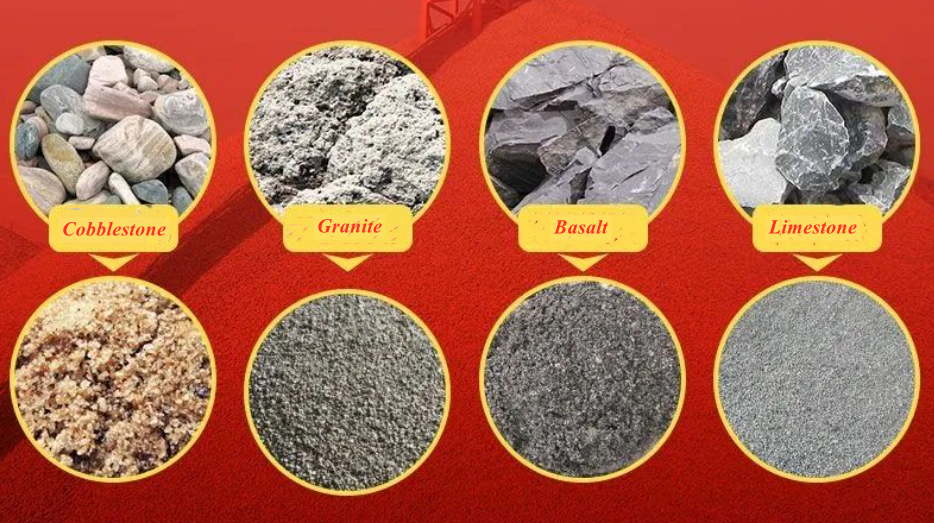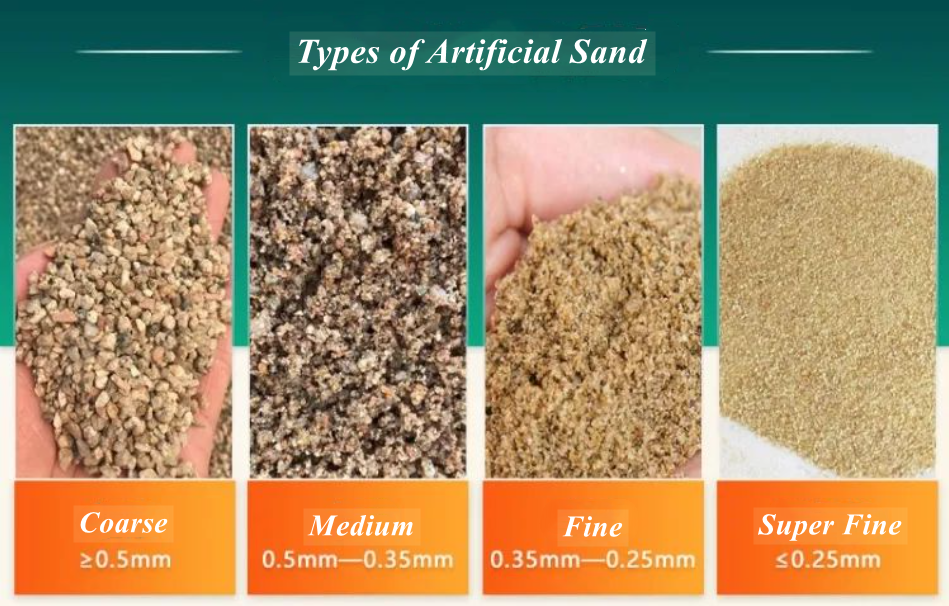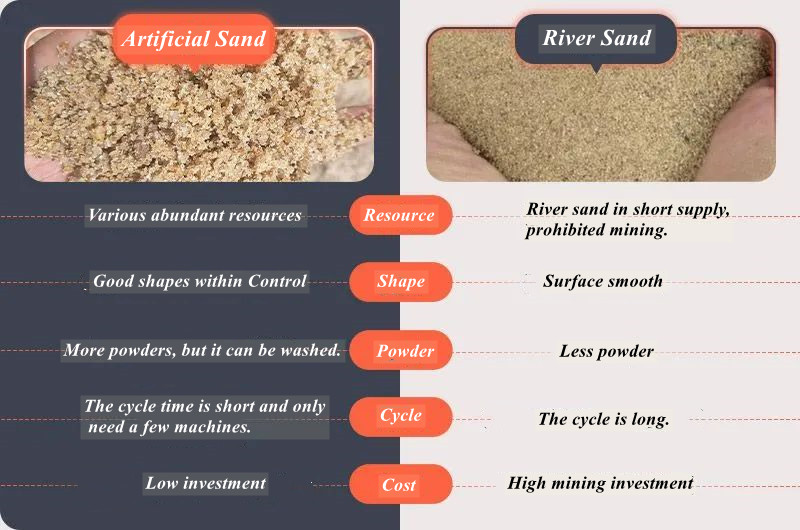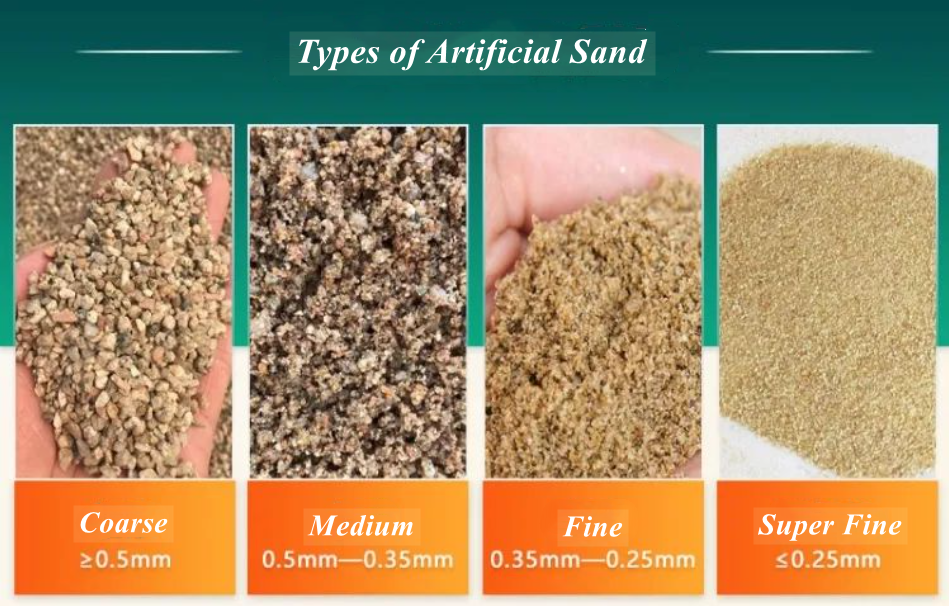Preface
As an indispensable basic materials, the supply and quality of sand are directly related to the stability and durability of the project. With the increasing depletion of natural sand resources and the tightening of environmental protection policies, the artificial sand as an alternative sand, is gradually coming into the public eye. So, can mechanism sand really replace natural sand?
01 What is the Artificial Sand?

Artificial sand, also known as mechanism sand, is different from natural sand formed by the action of natural conditions (mainly rock weathering), it is man-made sand and gravel particles made by mechanical crushing, screening and other processes. These equipments usually include vibrating feeder, jaw crusher, sand making machine, vibrating screen and belt conveyor, which all form a complete sand production line. Parameters of artificial sand such as particle size and grading can be adjusted as needed to meet various daily needs and comply with different construction sand standards.

The specifications of artificial sand are divided into four types according to the modulus of fineness (Mx): coarse, medium, fine and super fine.
Artificial sand sources
Raw materials for mechanism sand usually include granite, basalt, river pebbles, cobbles, andesite, rhyolite, gabbro, diorite, sandstone, limestone and so on.
Artificial sand performance characteristics
The particle shape is more regular and the surface is rougher, which is more easier to bonding with cement and other cementitious materials, improving the strength and durability of concrete. At the same time, mechanism sand has low mud content, which has less influence on the performance of concrete.
Resource utilization and environmental protection
Artificial sand can use tailings, waste rocks and other wastes as raw materials, realizing the recycling of resources and reducing the dependence on natural sand resources. At the same time, its production process is relatively environmentally friendly, in line with the concept of sustainable development.
02 Difference between mechanism sand and natural sand

In summary, artificial sand can replace natural sand in most scenarios, especially in the increasing demand for sand and gravel resources, limited natural sand resources and restricted mining, artificial sand has a broad market prospect. However, the complete replacement of natural sand still needs to comprehensively consider a variety of factors such as material performance, environmental requirements, economic costs and market acceptance. In the future, with the continuous progress of technology and the gradual recognition of the market, artificial sand is expected to realize the goal of comprehensively replacing natural sand in more fields.


Leave a Reply